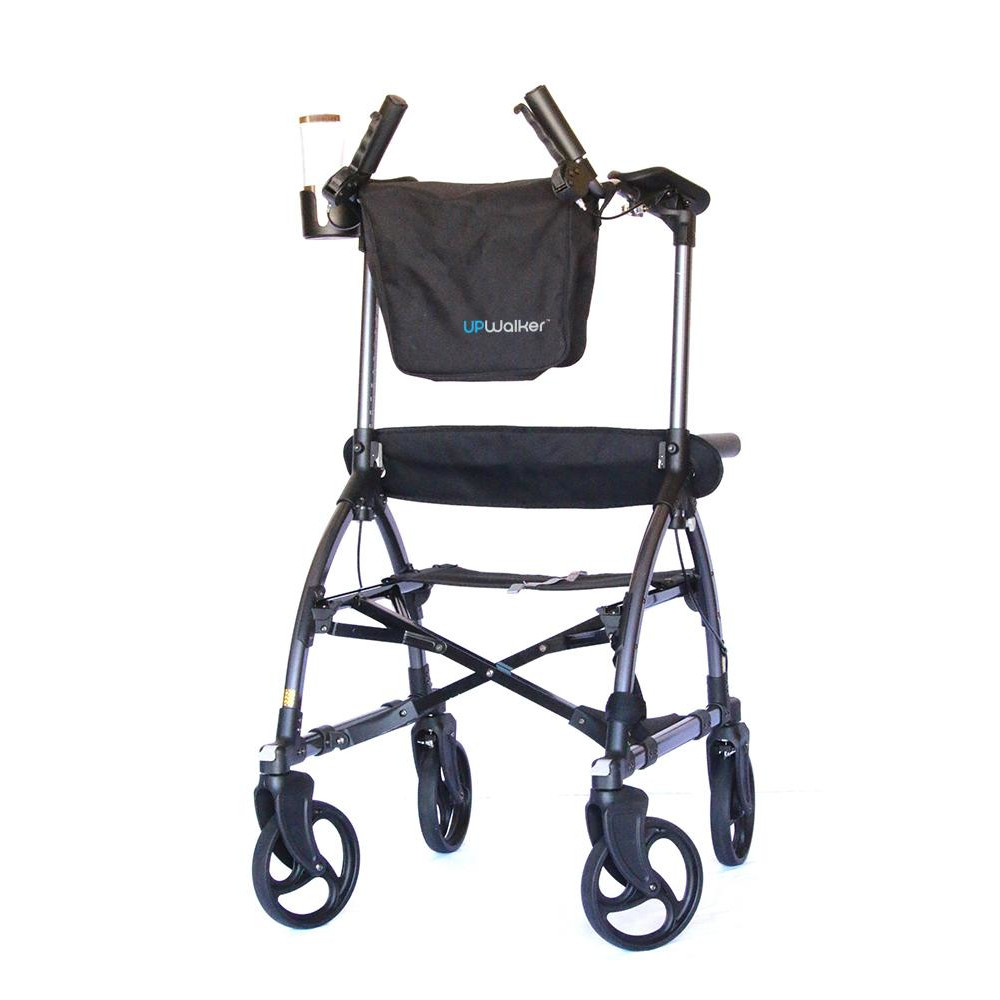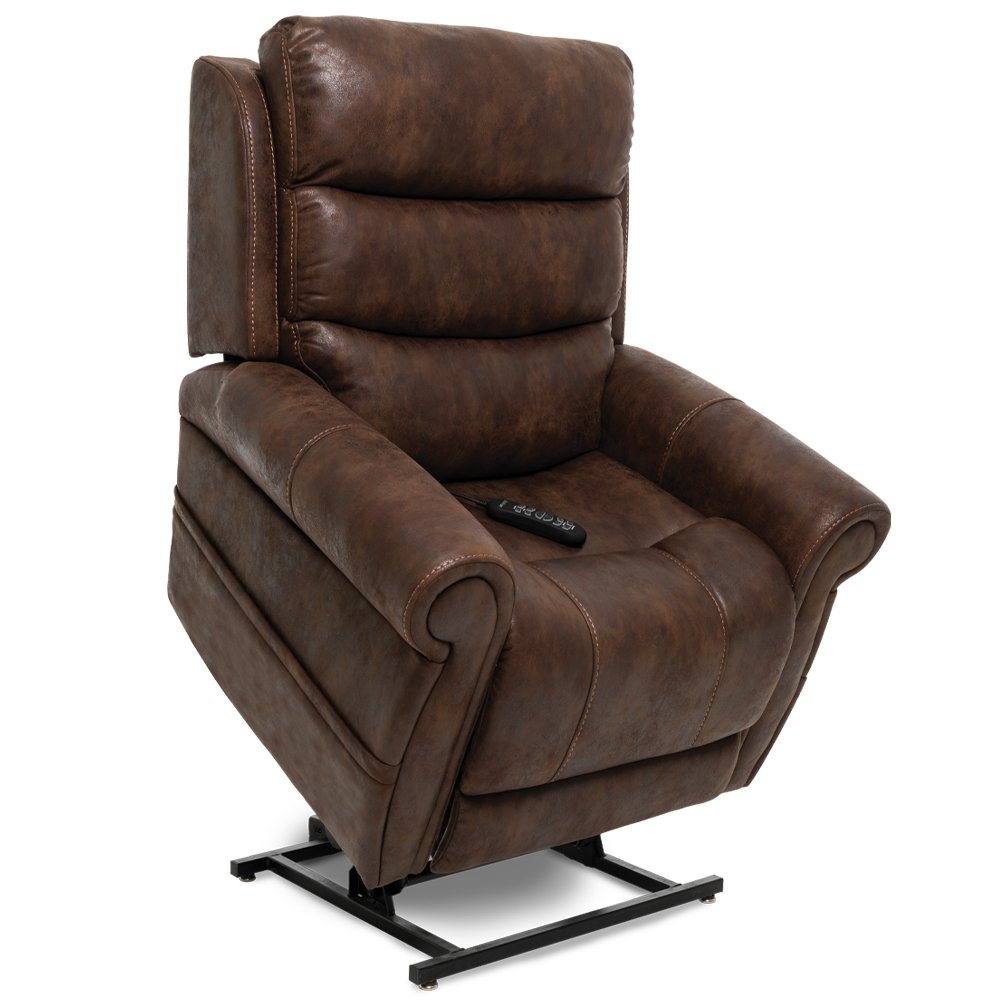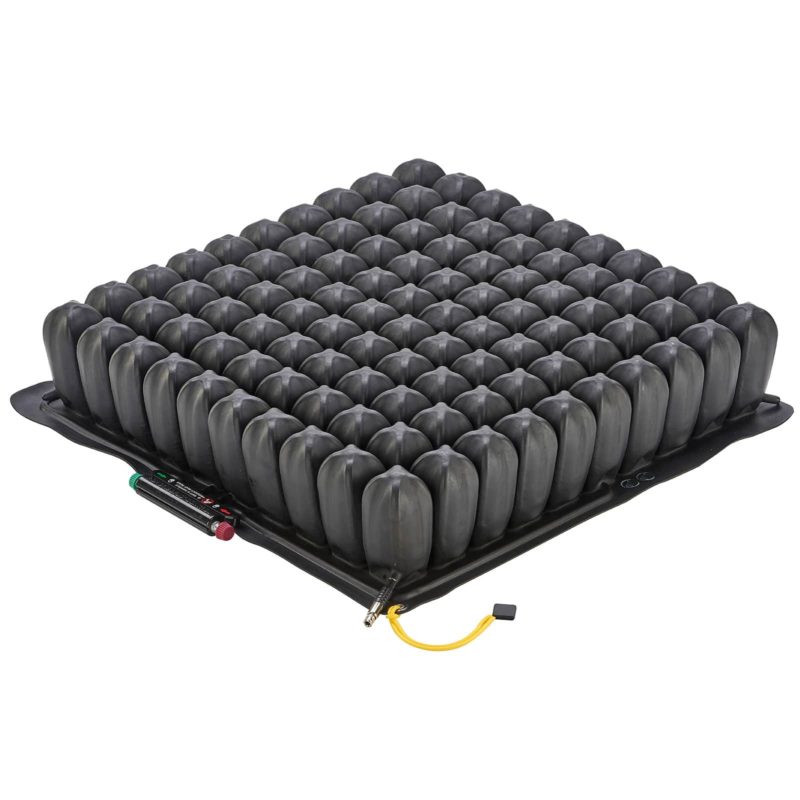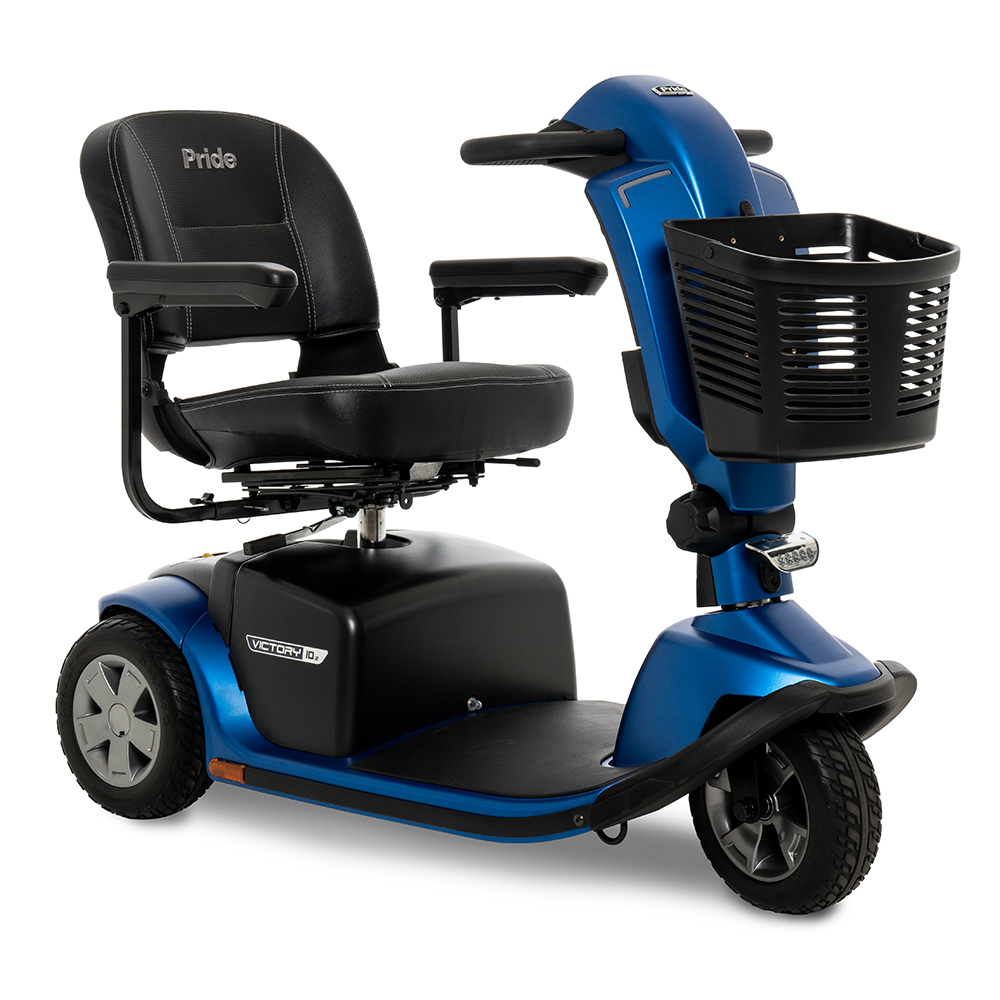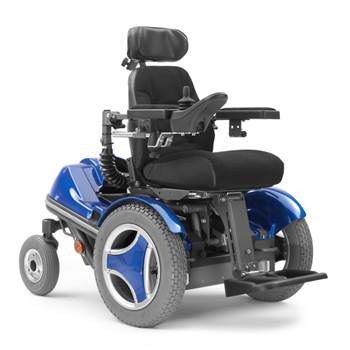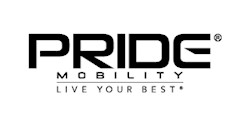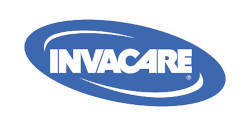MEDICARE RESOURCES
POWER WHEELCHAIRS
Power Wheelchairs
Indications and Limitations of Coverage and/or Medical Necessity
For any item to be covered by Medicare, it must 1) be eligible for a defined Medicare benefit category, 2) be reasonable and necessary for the diagnosis or treatment of illness or injury or to improve the functioning of a malformed body member, and 3) meet all other applicable Medicare statutory and regulatory requirements. For the items addressed in this medical policy, the criteria for “reasonable and necessary” are defined by the following indications and limitations of coverage and/or medical necessity.
Refer to the related Policy Article for information on orders and a face-to-face examination.
The term power mobility device (PMD) includes power operated vehicles (POVs) and power wheelchairs (PWCs).
BASIC COVERAGE CRITERIA:
All of the following basic criteria (A–C) must be met for a power mobility device (K0800–K0898) or a push-rim activated power assist device (E0986) to be covered. Additional coverage criteria for specific devices are listed below.
A) The patient has a mobility limitation that significantly impairs his/her ability to participate in one or more mobility-related activities of daily living (MRADLs) such as toileting, feeding, dressing, grooming, and bathing in customary locations in the home. A mobility limitation is one that:
- Prevents the patient from accomplishing an MRADL entirely, or
- Places the patient at reasonably determined heightened risk of morbidity or mortality secondary to the attempts to perform an MRADL; or
- Prevents the patient from completing an MRADL within a reasonable time frame.
B) The patient’s mobility limitation cannot be sufficiently and safely resolved by the use of an appropriately fitted cane or walker.
C) The patient does not have sufficient upper extremity function to self-propel an optimally-configured manual wheelchair in the home to perform MRADLs during a typical day.
- Limitations of strength, endurance, range of motion, or coordination, presence of pain, or deformity or absence of one or both upper extremities are relevant to the assessment of upper extremity function.
- An optimally-configured manual wheelchair is one with an appropriate wheelbase, device weight, seating options, and other appropriate nonpowered accessories.
POWER WHEELCHAIRS (K0813–K0891, K0898):
A power wheelchair is covered if:
- All of the basic coverage criteria (A–C) are met; and
- The patient does not meet coverage criterion D, E, or F for a POV; and
- Either criterion J or K is met; and
- Criteria L, M, N, and O are met; and
- Any coverage criteria pertaining to the specific wheelchair type (see below) are met.
J) The patient has the mental and physical capabilities to safely operate the power wheelchair that is provided; or
K) If the patient is unable to safely operate the power wheelchair, the patient has a caregiver who is unable to adequately propel an optimally configured manual wheelchair, but is available, willing, and able to safely operate the power wheelchair that is provided; and
L) The patient’s weight is less than or equal to the weight capacity of the power wheelchair that is provided.
M) The patient’s home provides adequate access between rooms, maneuvering space, and surfaces for the operation of the power wheelchair that is provided.
N) Use of a power wheelchair will significantly improve the patient’s ability to participate in MRADLs and the patient will use it in the home. For patients with severe cognitive and/or physical impairments, participation in MRADLs may require the assistance of a caregiver.
O) The patient has not expressed an unwillingness to use a power wheelchair in the home.
If the PWC will be used inside the home and coverage criteria (a)–(e) are not met but the criteria for a POV are met, payment will be based on the allowance for the least costly medically appropriate alternative.
If the PWC will be used inside the home and coverage criteria (a)–(e) are not met and the criteria for a POV are not met, it will be denied as not medically necessary.
If a PWC will only be used outside the home, see related Policy Article for information concerning noncoverage.
SPECIFIC TYPES OF POWER WHEELCHAIRS:
- A Group 1 PWC (K0813–K0816) or a Group 2 (K0820–K0829) is covered if all of the coverage criteria (a)-(e) for a PWC are met and the wheelchair is appropriate for the patient’s weight.
- A Group 2 Single Power Option PWC (K0835–K0840) is covered if all of the coverage criteria (a)–(e) for a PWC are met and if:
- Criterion 1 or 2 is met; and
- Criteria 3 and 4 are met.
- The patient requires a drive control interface other than a hand or chin-operated standard proportional joystick (examples include but are not limited to head control, sip and puff, switch control).
- The patient meets coverage criteria for a power tilt or a power recline seating system (see Wheelchair Options and Accessories policy for coverage criteria) and the system is being used on the wheelchair.
- The patient has had a specialty evaluation that was performed by a licensed/certified medical professional, such as a physical therapist (PT) or occupational therapist (OT), or physician who has specific training and experience in rehabilitation wheelchair evaluations and that documents the medical necessity for the wheelchair and its special features (see Documentation Requirements section). The PT, OT, or physician may have no financial relationship with the supplier.
- The wheelchair is provided by a supplier that employs a RESNA-certified Assistive Technology Professional (ATP) who specializes in wheelchairs and who has direct, in-person involvement in the wheelchair selection for the patient.
If a Group 2 Single Power Option PWC is provided and if II(A) or II(B) is not met (including but not limited to situations in which it is only provided to accommodate a power seat elevation feature, a power standing feature, or only power elevating legrests) but the coverage criteria for a PWC are met, payment will be based on the allowance for the least costly medically appropriate alternative Group 2 PWC.
- III. A Group 2 Multiple Power Option PWC (K0841–K0843) is covered if all of the coverage criteria (a)–(e) for a PWC are met and if:
- Criterion 1 or 2 is met; and
- Criteria 3 and 4 are met.
- The patient meets coverage criteria for a power tilt and recline seating system (see Wheelchair Options and Accessories policy) and the system is being used on the wheelchair.
- The patient uses a ventilator which is mounted on the wheelchair.
- The patient has had a specialty evaluation that was performed by a licensed/certified medical professional, such as a PT or OT, or physician who has specific training and experience in rehabilitation wheelchair evaluations and that documents the medical necessity for the wheelchair and its special features (see Documentation Requirements section). The PT, OT, or physician may have no financial relationship with the supplier.
- The wheelchair is provided by a supplier that employs a RESNA-certified Assistive Technology Professional (ATP) who specializes in wheelchairs and who has direct, in-person involvement in the wheelchair selection for the patient.
If a Group 2 Multiple Power Option PWC is provided and if III(A) or III(B) is not met but the criteria for another PWC are met, payment will be based on the allowance for the least costly medically appropriate alternative Group 2 PWC.
- IV. A Group 3 PWC with no power options (K0848–K0855) is covered if:
- All of the coverage criteria (a)–(e) for a PWC are met; and
- The patient’s mobility limitation is due to a neurological condition, myopathy, or congenital skeletal deformity; and
- The patient has had a specialty evaluation that was performed by a licensed/certified medical professional, such as a PT or OT, or physician who has specific training and experience in rehabilitation wheelchair evaluations and that documents the medical necessity for the wheelchair and its special features (see Documentation Requirements section). The PT, OT, or physician may have no financial relationship with the supplier and
- The wheelchair is provided by a supplier that employs a RESNA-certified Assistive Technology Professional (ATP) who specializes in wheelchairs and who has direct, in-person involvement in the wheelchair selection for the patient.
If a Group 3 PWC is provided and criterion A is met but either criterion B, C, or D is not met, payment will be based on the allowance for the least costly medically appropriate alternative Group 2 PWC.
- V. A Group 3 PWC with Single Power Option (K0856–K0860) or with Multiple Power Options (K0861–K0864) is covered if:
- The Group 3 criteria IV(A) and IV(B) are met; and
- The Group 2 Single Power Option (criteria II[A] and II[B]) or Multiple Power Options (criteria III[A] and III[B]) (respectively) are met.
If a Group 3 Single Power Option or Multiple Power Options PWC is provided and Criterion IV(A) is met but all of the other coverage criteria are not met, payment will be based on the allowance for the least costly medically appropriate alternative Group 2 or Group 3 PWC.
- VI. Group 4 PWCs (K0868–K0886) have added capabilities that are not needed for use in the home. Therefore, if these wheelchairs are provided and coverage criteria for a Group 2 or Group 3 PWC are met, payment will be based on the allowance for the least costly medically appropriate alternative.
If a Group 4 PWC is billed with a KX modifier (see Documentation Requirements section), payment at the time of initial automated processing will be based on the allowance for the comparable Group 3 PWC.
- VII. A Group 5 (Pediatric) PWC with Single Power Option (K0890) or with Multiple Power Options (K0891) is covered if:
- All the coverage criteria (a)–(e) for a PWC are met; and
- The patient is expected to grow in height; and
- The Group 2 Single Power Option (criteria II[A] and II[B]) or Multiple Power Options (criteria III[A] and III[B]) (respectively) are met.
If a Group 5 PWC is provided but all the coverage criteria are not met, payment will be based on the allowance for the least costly medically appropriate alternative.
- VIII. A push-rim activated power assist device (E0986) for a manual wheelchair is covered if all of the following criteria are met:
- All of the criteria for a power mobility device listed in the Basic Coverage Criteria section are met; and
- The patient has been self-propelling in a manual wheelchair for at least one year; and
- The patient has had a specialty evaluation that was performed by a licensed/certified medical professional, such as a PT or OT, or physician who has specific training and experience in rehabilitation wheelchair evaluations and that documents the need for the device in the patient’s home. The PT, OT, or physician may have no financial relationship with the supplier; and
- The wheelchair is provided by a supplier that employs a RESNA-certified Assistive Technology Professional (ATP) who specializes in wheelchairs and who has direct, in-person involvement in the wheelchair selection for the patient.
If all of the coverage criteria are not met, it will be denied as not medically necessary.
LEAST COSTLY ALTERNATIVE:
Coverage criteria for power mobility devices are based on a stepwise progression of medical necessity. If coverage criteria for the device that is provided are not met and if there is another device that meets the patient’s medical needs (as defined in this policy), payment will be based on the allowance for the least costly medically appropriate alternative.
Determinations of least costly alternative will take into account the patient’s weight, seating needs, and needs for other special features (i.e., power seating systems, alternative drive controls, ventilators).
Based on the criteria defined above, some types of PMDs will never be paid in full but will always be either paid as a least costly alternative (if coverage criteria are met) or denied (if coverage criteria for a PMD are not met). In those situations, the first level least costly alternative determination will be made by an automated system edit. However in many situations, the final determination of a least costly alternative can only be made at the time of manual review of a claim during medical review or a fraud investigation. Therefore, even if a payment reduction is made at the time of an initial claim determination, this does not preclude subsequent further adjustment in payment or denial based on the application of all coverage criteria in this policy at the time of post-payment manual claim review.
MISCELLANEOUS:
A POV or power wheelchair with Captain’s Chair is not appropriate for a patient who needs a separate wheelchair seat and/or back cushion. If a skin protection and/or positioning seat or back cushion that meets coverage criteria (see Wheelchair Seating LCD) is provided with a POV or a power wheelchair with Captain’s Chair, the POV or PWC will be denied as not medically necessary. (Refer to Wheelchair Seating LCD and Policy Article for information concerning coverage of general use, skin protection, or positioning cushions when they are provided with a POV or power wheelchair with Captain’s Chair.)
If a patient needs a seat and/or back cushion but does not meet coverage criteria for a skin protection and/or positioning cushion, it is appropriate to provide a Captain’s Chair seat (if the code exists) rather than a sling/solid seat/back and a separate general use seat and/or back cushion. If a general use seat and/or back cushion is provided with a power wheelchair with a sling/solid seat/back, total payment for those items will be based on the allowance for the least costly medically appropriate alternative – e.g., the code for the comparable power wheelchair with Captain’s Chair, if that code exists.
If a patient’s weight can be accommodated by a PWC with a lower weight capacity than the wheelchair that is provided, payment will be based on the allowance for the least costly medically appropriate alternative.
A seat elevator is a noncovered option on a power wheelchair. Therefore, if a Group 2 Seat Elevator PWC (K0830, K0831) is provided and if all of the criteria (a)–(e) for a PWC are met, payment will be based on the allowance for the least costly medically appropriate alternative Group 2 PWC without seat elevator.
The delivery of the PMD must be within 120 days following completion of the face-to face examination. (Exception: For PWCs that go through the Advance Determination of Medicare Coverage (ADMC) process and receive an affirmative determination, the delivery must be within 6 months following the determination.)
About
ANDERSON WHEELCHAIR
Anderson’s Wheelchair is a family owned and operated business located in Rochester, MN, serving the greater South East Minnesota area for over 55 years! Located directly across from the Rochester Mayo Clinic St. Mary’s Hospital facility, Anderson’s Wheelchair supplies a complete line of home medical equipment and supplies, but our specialty remains wheelchairs!


